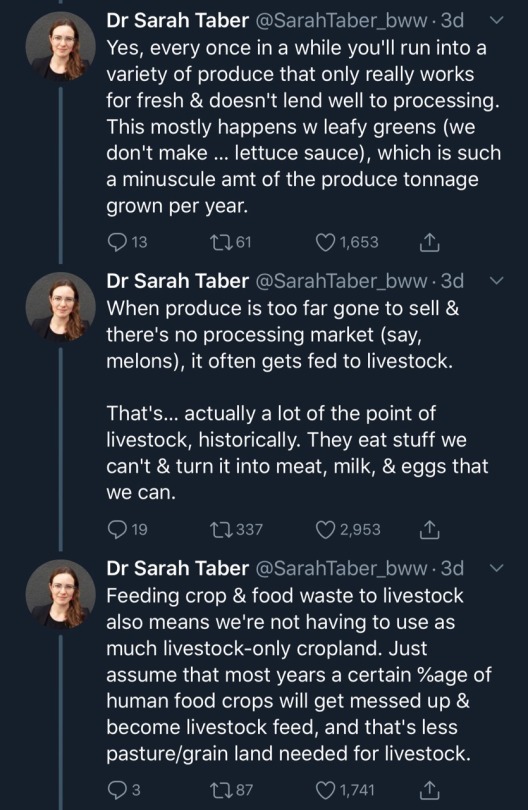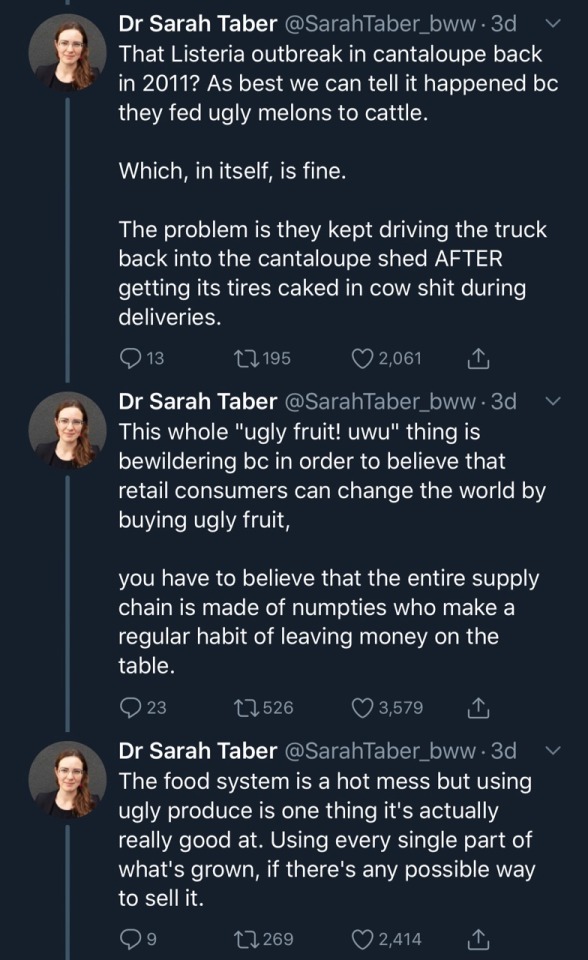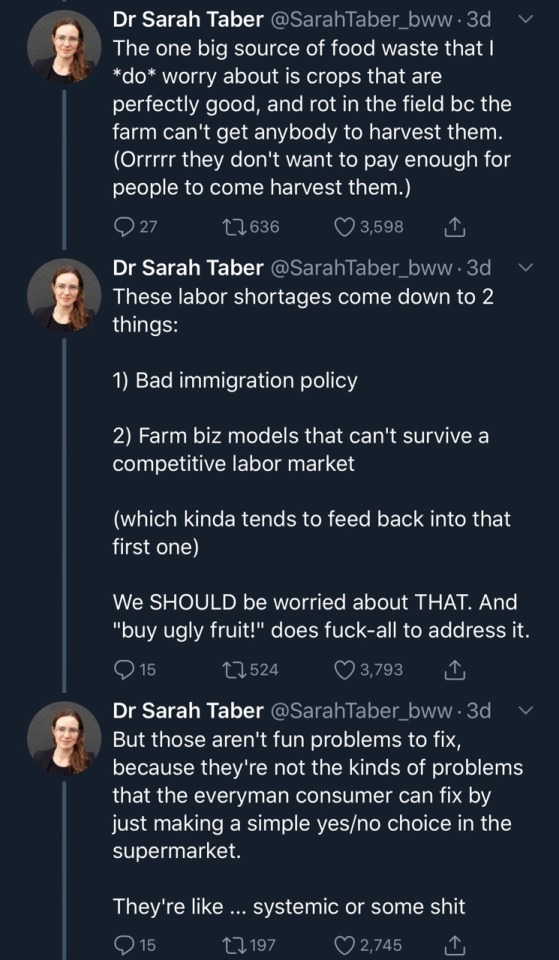OH GOD PLEASE!!! I HOPE SO, I CANT BEAR TO WATCH ANOTHER COMMERCIAL ABOUT HOW THEY LOVE THE ANIMALS.
OH GOD PLEASE!!! I HOPE SO, I CANT BEAR TO WATCH ANOTHER COMMERCIAL ABOUT HOW THEY LOVE THE ANIMALS. WHAT A BUNCH OF BULL

‘A Californian congressmen has just introduced a law to make it illegal to keep orcas in captivity. This could change everything — but SeaWorld is already mounting a vicious campaign to defeat this congressman’s brave move. We need to tell the State of California that the public won’t accept SeaWorld’s imprisonment of orcas any longer.’
Enact the Orca Welfare and Safety Act to make it illegal to hold orcas in captivity for performance or entertainment purposes
sign this petition
More Posts from Arieso226 and Others
The Birth of Unions through the Black Gaze
NO. 1
During the 1940s, the past three decades beforehand for Black Americans have been life-changing: The Harlem Renaissance in the 20s, the Great Depression in the 30s, and then the inauguration of President FDR, who would eventually lead America into WWII, at the beginning of the 40s. Then came the Great Depression, and with it, economic downfall and loss. It devasted the economy, and millions in the country could not find jobs, nor could they keep it. Black Americans suffered harsher during this time since they couldn’t make ends meet; even those who still had jobs, labored in unskilled and service fields, regardless of their actual skills. And whether from the South or the North, these economic pressures made a significant decline in incomes to a third of what they had been in before the Depression.

NO. 2
‘’Wages had fallen to roughly 60 percent of their pre-Depression level. Declining demand followed the decline in earnings, speeding the downward spiral. The economic crisis affected everyone, black and white, rural and urban, skilled and unskilled. The federal government in 1930 estimated that 17 percent of the white population and 38 percent of the black population could not support themselves without assistance. White men took jobs held by black men, and white women took jobs held by black women, while privileged black folk who were financially stable toward their businesses and homes, lost them.’’ To Ask for an Equal Chance, Greenburg, pg.1-3

NO. 3
The ideas of President F.D.R helped, called New Deal programs increased the number of public jobs. Because these new agencies had nondiscrimination provisions, black workers at all levels of skill had a better chance to obtain these jobs than those in private sectors where racial discrimination remained. And even though black workers still worked in the same menial jobs they found in private employment, many government programs—particularly in northern and western cities—also hired black skilled, clerical, and professional workers, like black social workers, nurses, teachers, office managers, architects, engineers, and administrations, which they all benefited, and had a tremendous impact on black employment. And for the first time, 1932 Section 7A of the National Industrial Recovery Act (NIRA) guaranteed workers the right to organize unions, but when the Supreme Court declared it was ‘unconstitutional’, Congress passed the Wagner National Labor Relations Act, which extended 7A’s scope.

NO. 4
Industrial union organizers sought to engage all possible workers in the struggle for union recognition; when racist whites excluded black workers, organizers pointed out that employers hired the latter as strike bearers (scabs). Only by offering union membership to all, regardless of race, could unskilled and industrial unions succeed. Therefore, unions or their leaderships sought to actively recruit African American workers alongside whites. Among these workers? Socialists and Communists. Drawn to this movement, believing that the working class was the victim of an exploitative capitalist system, which the Depression made their arguments even more convincing. Only unity among all workers could overthrow the tyranny of their bosses, the parties insisted, and bring about economic change. They considered racism a tool the wealthy used to divide the workers and dilute their power, which drew in black Americans, welcoming them in through politics and the realities of organizing unskilled workers.

NO. 5
Some unions had already begun organizing around the principles that interracial unions advanced the interests of all workers, something the elite, racists like the Southern Klans and the police were fearful of. Black and white built the United Mineworkers Union, which from its inception in 1890. Since James Ford, a black Communist leader argued that union benefited and helped desperately, and unemployed black Americans, while including them improved the chance for successful organizing, and to better achieve their goals. Ford writes, ‘‘the organization of the people’s immediate needs, better wages, unemployment, and social insurance, better wages, civil and economic, and equal rights, the Communist Party worked on a Popular Front strategy of working with liberal groups when doing so advance its common goals. Therefore, Communists embraced all progressive union activists as coalition partners.’’

NO. 6
Unfortunately, the elite, wealthy, and racists in any work, but especially the police, disliked integration. Police beat, arrested, and even on occasion shot protesters and organizers, often assisted by other angry whites. The Georgia Klan, unhappy at the advancement of black textile workers as a result of a union drive, responded with a violent anti-CIO campaign in 1939, convinced that the communist agitators they were convinced, interpreting the Communists interracial union organizing as a Soviet plot to destroy the United States by undermining traditional race relations and stirring up otherwise ‘contented black Americans to demand equality they did not deserve and even worse—sought to bring down the white race by granting black men readily access to white women. Such rhetoric was used to preserve the economic advantages for white-middle and upper, and middle-class brought anti-union violence to disastrous new heights and bringing an end to what would have been the beginning of economic equity to all.











The Tuskegee Experiment
NO. 1
The Tuskegee Experiment was a hoax experiment used to study how black Americans differ from white Americans in catching a disease. It was a study truly held on the biases and stereotypes of other races. No scientific experiment inflicted more damage on the collective psyche of black Americans than the Tuskegee experiment. ‘‘In 1932, following a survey of the incidence of syphilis in a number of Southern regions, the venereal disease division of the U.S Public Health Service (USPHS) began what turned out to be a forty-year project in Macon County, Alabama, to follow the effects of untreated syphilis in some 400 black men. The study continued through World War II, when a number of the men who were called up for the draft and, had they not been research subjects, would have received medical attention for their infection. It continued through the 1950s, after the efficacy of penicillin treatment was established, and after the Nuremberg trials produced a code of ethics for biomedical research. It lasted through the 1960s, untouched by the civil rights agitation, and unaffected by the code of research adopted by the USPHS itself. It ended only in 1972 when an account of the experiment in the Washington Post sparked a furor.’’
NO. 2
One question that boggles the mind is how could an experiment of such degree that violated both moral and medical ethics continue on for so long? Unfortunately, no questions were asked about the rights and welfare of the men who became study/research subjects, and those same men didn’t even understand that they were unwillingly participating in a research project. Each man was given many treatments, placebo’s mostly, including a ‘spinal tap’, where the needle went directly into the spine without anesthesia, just to see what would happen. ‘‘At least three generations of doctors serving in the venereal disease division of the USPHS, numerous officials at the Tuskegee Institute and its affiliated hospital, hundreds of doctors in the Macon County and Alabama medical societies, and numerous foundation officials at the Rosenwald Fund and Milbank Memorial Fund. It also includes the many readers of such medical journals like the Public Health Reports, the Archives of Internal Medicine, and the Journal of Chronic Diseases. These readers could not have escaped the conclusion that untreated blacks had been severely damaged. In July 1954, an article in the Public Health Reports, to choose one example from many, concluded that ‘the life expectancy of a Negro Male between the ages of 25 to 50 years, infected with syphilis and receiving no appreciable treatment for his infection, is reduced by about 17%.’’
NO. 3
As the 400 men were being ‘treated’, government officials were ecstatic to see that syphilis was the same in blacks as it was in whites, by looking at the many and various autopsies of the men who did not survive, due to organ failure and damage. Racism was at the forefront of this tragedy, as scientists saw black men as expendable and looked forward to seeing the disease progress. Men who were affected tried to seek out treatment elsewhere, in other counties but were called back by the very doctors and nurses they trusted, since they were apart of the study. Once the news story broke out, many in the black community lost faith in the government and no longer believed health officials who spoke on matters of public concern. For example, when the AIDS crisis began in the ’80s and ’90s, ‘‘the Tuskegee experiment predisposed many blacks to distrust health authorities, a fact many whites had difficulty understanding. The NYTimes on May 6, 1992, many black Americans believes that AIDS and the health measures used against it are part of the conspiracy to wipe out the black race. To support their assertion, their editor cited a survey of black church members in 1990 that revealed ‘an astonishing 35% believed AIDS was a form of genocide.’
That's amazing!



















Oh my gosh
just do it











Very informative thread -source
The racial aspects of Sci Fi, Fantasy and other forms media
NO. 1
One of the blog posts I have written before was titled ‘Mean World Syndrome’, which talked about how race and media affects everyone on a global scale. Racial aspects of sci-fi, fantasy, and other forms of media have long been a source of controversy. From the stereotypes of aliens in Star Trek to the whitewashing of characters in movies like Avatar, Prince of Persia, etc. these issues have been a major source of discussion in the media landscape. In many cases, racial stereotypes have been used to create a sense of ‘otherness’ for the characters of color in order to reinforce a sense of white superiority. This has led to criticism from fans, activists, and academics who have called for more representation of people of color in sci-fi, fantasy, and other forms of media.


NO. 2
In the entertainment business, inclusivity is hard to come by, and in some cases, the representation of characters of color in these genres is inadequate and often offensive. Characters of color are often relegated to the sidelines and made to serve as the backdrop to white characters’ stories, or they are depicted as tokens and stereotypes. This lack of meaningful representation has led to a push for more diverse casts in sci-fi, fantasy, and other forms of media. ‘‘Like many social sciences, international/intercultural/interethnic communication and media studies are primarily an Anglo-American media images have always been critically dissected, often by scholars with some kind of privileged tie to other cultures—Most makers of these blockbusters are mostly white males with English as their mother tongue, mutli-millionaires or aspiring to become one as soon as possible. They usually internalize a mid-Atlantic view of global history and geography, its central myths and legends. So many blockbusters remain ethnocentric, even today—they tend to make non-Westerners look at the world through Western eyes.’’
NO.3
In addition to representation in the stories themselves, the casting of actors to bring these characters to life has been another source of debate. Many actors of color have argued that they are often typecast into roles that are stereotypical or that do not reflect the true diversity of the world. Films or TV shows with fantasy/sci-fi themes on Netflix, like Chambers or Raising Dion are not being properly advertised because, like Inclusive Advertising: What’s Holding the Industry Back? claims, ‘‘The industry itself is not diverse: The advertising industry — across the ecosystem and at all levels — is not representative, which is itself a barrier to creating representative and inclusive content. Only 19% of in-house and 23% of agency survey respondents reported that their leader almost always considers the demographic diversity of their team when developing content. That, and individuals (in these marketing companies) lack awareness of and access to the knowledge, skills, resources, and tools to create representative and inclusive content. Individuals are confident in their ability to create representative and inclusive content, but only if provided with adequate tools and resources.’’


NO. 4
Of course, there will always be people who dislike seeing a more diverse setting, especially against the established order of Western ‘‘whiteness’’ ideologies. Ultimately, the best way to ensure diversity in these genres is to continue to create stories that feature diverse characters and cultures. If authors, producers, and casting directors make a conscious effort to create more imaginative stories that are inclusive and reflective of the real world, then audiences will be able to experience a more authentic and meaningful experience.

Belly Dancing
NO. 1
The art of belly dancing is a Middle Eastern practice that has, over time, gravitated towards Western white American women. The way American women dance is this is a ‘glamorization’, and more focused on the power of reception, rather than cultivating it and respecting the practice. Originally, belly dancing is based on ancient folk and social dances in North African and Middle Eastern countries, particularly Egypt and Turkey. The dance is characterized by various hip, torso, shoulder, and chest movements. ‘‘The images projected by Westerners in the performance of belly dance and other forms of oriental dance raise the thorny issue of orientalism. The vocabulary of the dance and its position within the framework of the West, especially the United States, as ‘other’ provides an ‘empty’ location, as in ‘not part of my culture’, for the construction of exotic new fantasy identities. At the same time, as a repository of media stereotypes and thus Western fantasies of women, it also provides physical images via the femme fatale which the (generally female) dance emulates in order to play an assertive sexual role in a male-dominated Western society.’’
NO. 2
Of course, here in the West, its meaning has changed, especially in America when gained popularity over 100 years ago when ‘dancing girls’ from different countries showcased in Chicago’s World Fair. ‘‘Because of the movements of body parts, such as the stomach, that were expected to be tightly constrained during the Victorian era, controversy surrounded these performers, and belly dance became associated with burlesque, stripping and prostitution. Despite perceptions of belly dancing being associated with sex work, the dance has a variety of meanings for participants, like spiritual, communal, and feminine qualities. For most dancers in the United States, the dance is a form of leisure. Leisure is a voluntary activity that people pursue with a positive state of mind during their free time. For many dancers, belly dance is an enjoyable form of recreation, rather than a primary source of income. Women in most large and mid-size cities around the country take belly dance classes at studios, gyms, and recreation centers.’’
NO. 3
Belly dancing is a key icon of the Middle East and is a site for performing and interpreting. It is appealing because it expresses ‘imperial feelings’, or the complexity of psychological and political belonging to an empire that is often unspoken, sometimes subconscious, but always present, the ‘habits of heart and mind’ that infuse and accompany structures of difference and domination. We can call on U.S imperialism as an example, as it rests as a multicultural nationalism. Belly dancing has become a ‘‘site for staging a New Age feminism and liberal Orientalist perspective on Arab and Muslim women, illustrating what Edward Said called, ‘new-Orientalism’ of the present moment. Orientalism continues to be a deeply appealing, binary frame for imagining the ‘West’ in opposition to the ‘Orient’, or to the East—a Western style for dominating, restructuring, and having authority over the Orient’, through the production of an 'idea that has a history and tradition of thought, imagery, and vocabulary that has given it a reality and presence in and for the West.’’

The Origins of Fairies
Fairies are magical creatures, and all manners of children are obsessed with just the mention of them. Not to mention the Disney-ified version of fairies like ‘‘Tinkerbell’’. But where or what was the was the origination of ‘fairies’? How did people come to call these magical spirits ‘fairies’? And where did the word ‘fairy’ come from, and how has the meaning change over the centuries?

Well, the first question, what are the origins of fairies, or ‘fairyland’? Fairies are most widely mentioned in Gaelic literature, meaning Ireland, and are vastly integral to the people and culture. ‘Ireland is the country of Fairies. Fully to understand the Irish temperament, therefore it is necessary to know Ireland’s Fairy lore. Since the Fairies are mentioned first and most frequently in the literature written in the Irish languages of centuries ago, we must turn for information to the great mass of poems and stories from the twelfth to the sixteenth century. The Fairies of ancient Ireland belonged to a race known as ‘Tuath De Danaan’ came to Ireland, legend says from the ‘northern isles of the world, where they had been learning lore and magic and druidism and wizardry and cunning until they surpassed the sages of the arts of heathendom.’ ’’

Why then, have the mention of fairies been connected to the feminine, and feminine ideals? Because beauty standards rely heavily on gender, and ‘fairies’ with their magical art forms, have become twisted and their original ‘conquering form’ forgotten, and what better way to reinforce this than by using children’s fairy tales, which emphasizing women’s beauty and passivity, which serve to legitimize the dominant gendered system. ‘‘Research since the early 1970s has shown that children’s literature contains explicit and implicit messages about dominant power structures in society, especially those concerning gender. Fairy tales written during the eighteenth and nineteenth were intended to teach girls and young women how to become domesticated, respectable, and attractive to a marriage partner and to teach boys and girls appropriated gendered values, and attitudes.’’


Finally, where did the word ‘fairie’ come from? ‘‘They were at first, as established up above, called the ‘De Dannans’, who came to conquer those who were already in possession of Ireland, but were overcome with the ‘Mileasans’, a mythical race said to be the ancestors of modern Irishmen, and settled in a seperate part of the island, retiring into the green hills, where they required a new name: People of the Fairy Mound, or Aes Side (Ace Shithe, or Shee). As clouds are shot through with lightning, so is early Irish literature with accounts of invaders who became the Fairy Folk. ‘In Ireland, the Fairies have never been forgotten’: Brian Merriman, the last Gaelic poet of prominence, speaks of them as the treasure of his country in time of trouble, and Patrick MacGill, the Donegal poet, expressed the same idea when, amid the terrors of the battlefield, he wrote, ‘If we forget the Fairies,
And tread upon the rings,
God will perchance forget us,
And think of other things.
When we forget you, Fairies,
Who guard our spirits’ light:
God will forget the morrow,
And Day forget the Night’’.
.
The Creation and Origin story of Gargoyles!
There are stony creatures that you see on the top or sides of great architectural buildings and churches in Europe. There are stone-carved grotesques with spout designs to convey water from a roof and away from the side of the building to prevent water from running down masonry walls and eroding the mortar between. Architects often used multiple gargoyles on buildings to divide the flow of rainwater off the roof to minimize the potential damage from a rainstorm.

NO. 2
Despite their frightening appearances, Gargoyles are, according to the French legend mounted on the walls of a newly built church to scare off evil spirits and used for protection. Due to this, churches, which were considered holy places, often had these creatures on the roof to ward off the devil and demons. They are also suitable as guardians, as they have a high defense from their stony skin making them difficult to wound. The legend involves St. Romanus the former chancellor of the Merovingian king Clotaire II who was made bishop of Rouen, and how he saved the country around Rouen from a sinister monster called Gargouille, a typical dragon with bat-like wings, a long neck, and the ability to breathe fire from its mouth. Multiple versions of the story are given, either that St. Romanus subdued the creature with a crucifix, or he captured the creature with the help of the only volunteer, a condemned man. In each, the monster is led back to Rouen and burned, but its head and neck would not burn due to being tempered by its own fire breath. The head was then mounted on the walls of the newly built church to scare off evil spirits, and used for protection.

NO. 3
They were useful and designed by artists who created them by sheer necessity, carefully skilled by sharp hands, and made to improve the silhouette of the buildings. ‘‘The gargoyle is a marker in the march of civilization. It was a great thought and a distinct mark of regard for the common people when it was thought best to provide means of throwing the water from the roofs of great public buildings well away from the walls rather than to allow it to trickle down upon the passers-by. The gargoyle had its development in regard to human comfort. It is the kind of an idea that would breed revolution. The first decorative gargoyle of the middle ages was of the year 1220, and the earliest type is found at Laon, France.’’

-
 russenoire liked this · 1 year ago
russenoire liked this · 1 year ago -
 shamardj liked this · 1 year ago
shamardj liked this · 1 year ago -
 justanotherdaywaiting liked this · 1 year ago
justanotherdaywaiting liked this · 1 year ago -
 moundcity liked this · 1 year ago
moundcity liked this · 1 year ago -
 patchworkgirlfriend liked this · 1 year ago
patchworkgirlfriend liked this · 1 year ago -
 easyfastcheapcooking liked this · 2 years ago
easyfastcheapcooking liked this · 2 years ago -
 lorenlovespink5 reblogged this · 2 years ago
lorenlovespink5 reblogged this · 2 years ago -
 lorenlovespink5 liked this · 2 years ago
lorenlovespink5 liked this · 2 years ago -
 done14-sex-41ker liked this · 2 years ago
done14-sex-41ker liked this · 2 years ago
26-year-old Anthro-Influencer Anthropology, blogger, traveler, mythological buff! Check out my ebook on Mythology today👉🏾 https://www.ariellecanate.com/
208 posts
